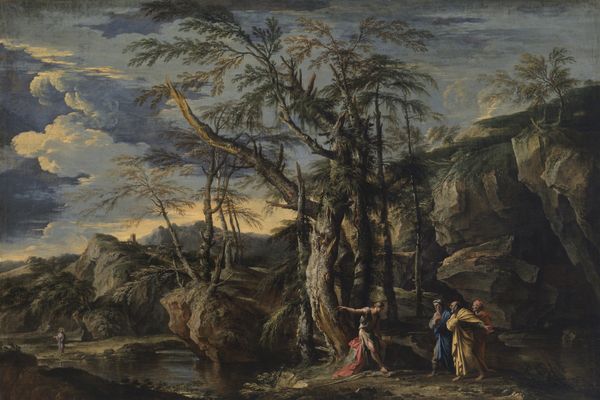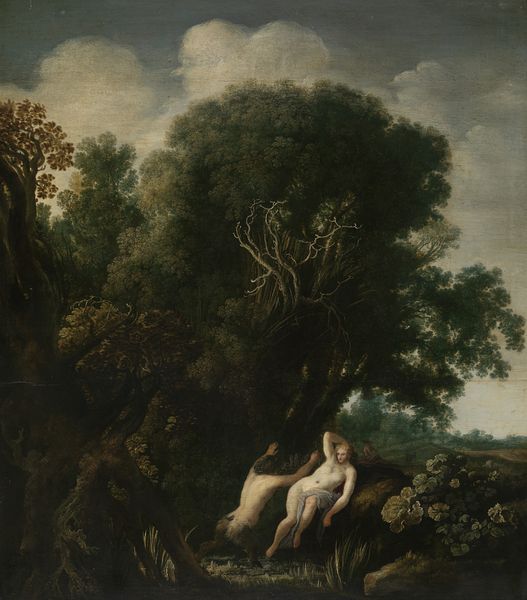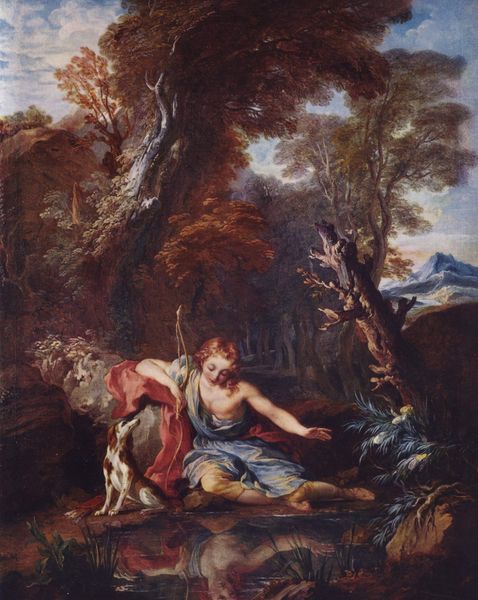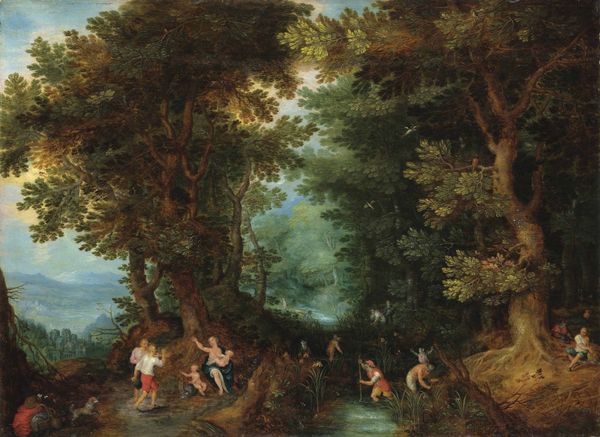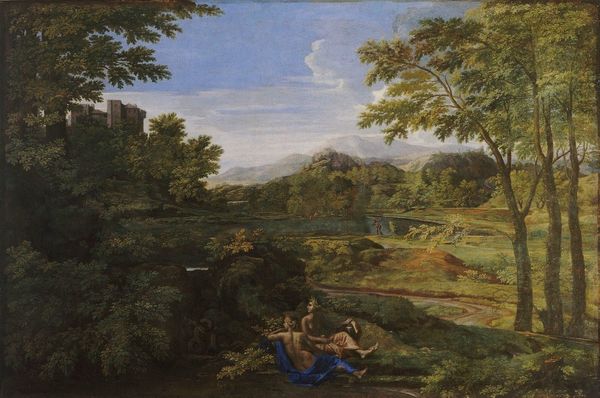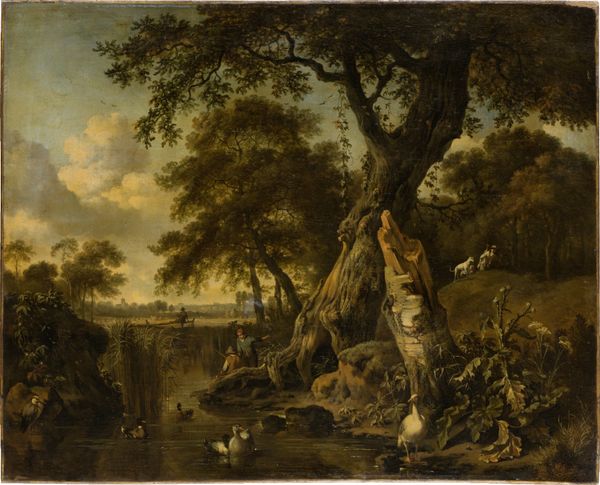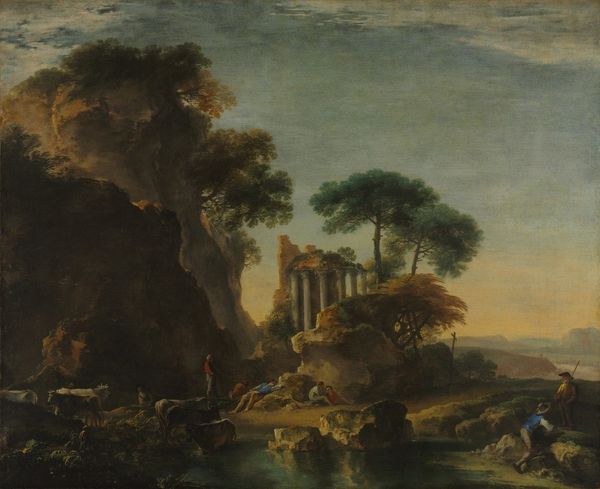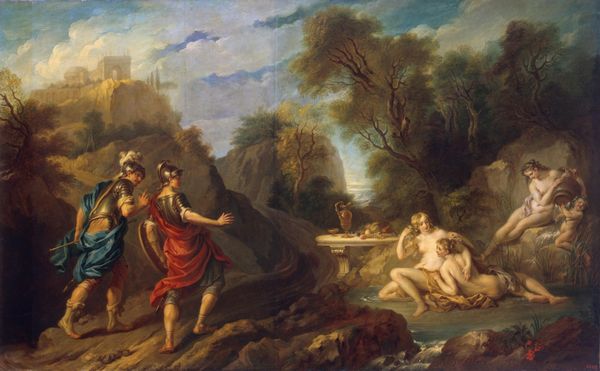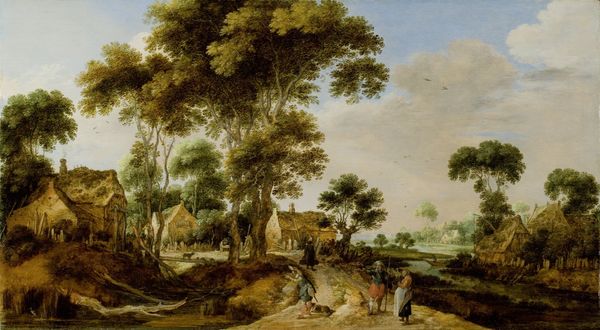
oil-paint
#
allegory
#
baroque
#
oil-paint
#
landscape
#
figuration
#
oil painting
#
history-painting
Copyright: Public domain
Art Historian: We’re looking at "Landscape with Psyche and Jupiter," an oil on canvas completed around 1610 by Peter Paul Rubens. It’s a beautiful example of early Baroque landscape painting. Art Historian: Breathtaking. I’m immediately drawn to the contrast between the turbulent waterfall on the right, bisected by a vivid rainbow, and the relative calm on the left side of the scene with a seated figure and an eagle. There's a visual dialogue between power and serenity here. Art Historian: Yes, that figure is Psyche, and above her we see Jupiter’s eagle. In the narrative, Jupiter tasks his eagle with bringing Psyche water from the River Styx. Rubens made a career painting grand narratives, mythological and religious, but his landscapes like this show a developing genre in its own right. Art Historian: The rainbow feels like an archetypal bridge. Here it perhaps represents the connection between the earthly realm and the divine. It softens what could be a frightening torrent of water – suggesting purification and renewal are taking place. And water is always connected to subconscious emotional states. Art Historian: Interestingly, Rubens elevates what had been traditionally background settings into the main subject. Think about the changing role of nature in art and society during this period; this painting signals that shift. This work emerged during the Counter-Reformation, so its classicism appealed to a Church that sought to promote itself as sophisticated. Art Historian: It's interesting to see Psyche, soul personified, here being helped. Eagles have carried associations with nobility and divine power across cultures, and they often stand for vision. I wonder if Rubens intended the viewer to contemplate a journey of the soul guided by transcendent forces within nature itself. Art Historian: That’s insightful, I wonder how the elite collectors and courtiers would interpret those symbols and allusions during the 17th century. It speaks to the painting’s ability to carry different meanings for distinct audiences. Art Historian: Exactly. Whether read through a lens of faith, myth or natural philosophy, this scene serves as an enduring emblem of transformation. Art Historian: I find myself reconsidering Rubens’ approach to landscape in the context of his wider career, thank you. Art Historian: It was a pleasure.
Comments
No comments
Be the first to comment and join the conversation on the ultimate creative platform.
